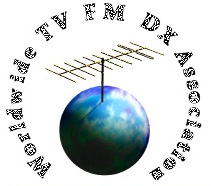The Boston Globe Story by Hiawatha Bray • 3w
When Boston’s newest digital TV station, WWOO, begins broadcasting on Wednesday from the roof of One Beacon Street, just a handful of engineers will be watching, because it’s only a test. But if everything works, our video viewing habits could start to change in a big way.
With approval from the Federal Communications Commission, WWOO is conducting the first US test of 5G television broadcasting. It’s a system that sends shows to smartphones and mobile devices in much the same way an old-fashioned TV picks up broadcasts through a rabbit-ear antenna. With 5G broadcasting, every smartphone would become a pocket-sized TV set capable of receiving free broadcasts over the air.
“This will go direct to your phone, without Wi-Fi, without a SIM card,” said WWOO’s owner Bill Christian. “It’s just a proof of concept right now, but we think it’s got a potential for something very, very cool.”
During the test, WWOO will transmit only one show — NASA TV, the space agency’s round-the-clock video feed. Not that it really matters: Standard 5G phones can’t pick it up yet. The testers will use a handful of custom-made 5G phones created especially for this tryout.
Of course, we already stream TV and movies on our phones. But today’s networks must generate a separate data stream for each user’s device. So if 30,000 people at Gillette Stadium want to watch TV coverage of the game, the network would have to crank out 30,000 video streams — a substantial burden for the network. With 5G TV, the network would transmit the show only once, but all 30,000 fans can tune in.
The 5G broadcast signal will use different frequencies from those used for standard 5G voice and data services. This will ensure that the TV broadcasts won’t lead to dropped phone calls or spotty internet service.
Christian said the same network can also transmit securely encrypted emergency data to first responders, including police and fire departments. For instance, the system could be used to transmit high-definition video of a police encounter to other officers, or to share schematics of a burning building with firefighters. WWOO plans to test this service in cooperation with the Southeast Massachusetts Regional 911 District.
So when will this actually hit your phone? Qualcomm, the leading maker of cellphone chips, has developed hardware that can receive 5G broadcast signals. Christian said that if tests pan out, the first compatible smartphones should reach consumers in about a year.
-end-

